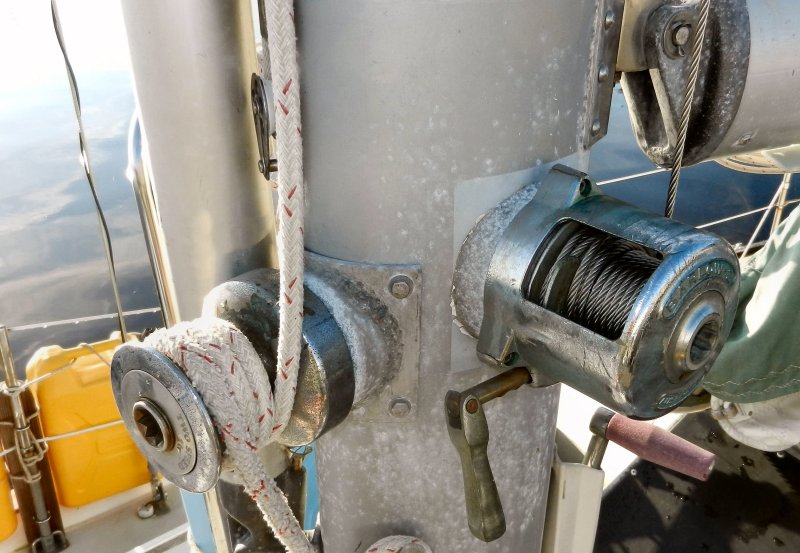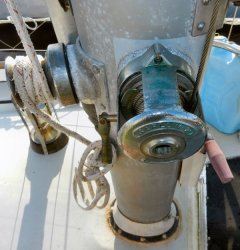WIRE
HALYARDS FOR HEADSAILS
©
2014 Tor Pinney - All Rights Reserved
No stretch, no cleat, no
coil.
Wire and wire-to-rope
halyards were popular in the mid-20th century because they
enabled sailors to set a sail's luff tension just once, when
hoisting. All-rope halyards back then tended to stretch and
usually needed to be re-tightened after a while, either with the
halyard winch or a tack downhaul. Today's low-stretch and
no-stretch lines, however, allow us to hoist a sail quickly by
hand, set the halyard tension once with the winch, and forget
it. No more sagging luffs, sluggish wire winches, or awkward
wire-to-rope splices.
But consider the modern
roller furling headsail. You hoist it once and up it stays for a
season or a year or more. Meanwhile, its halyard winch and
cleat, or at the least a line stopper, are permanently occupied
and you've got a cumbersome coil of virtually never-used line
forever dangling at the base of the mast - two coils if the boat
also carries a roller furling staysail. What an untidy waste!
There's a neater, more practical way to hoist headsails, and
that is with an old-fashioned wire halyard.

|
I replaced
Silverheels' original genoa halyard line winch with a
used wire winch I picked up inexpensively at a second-hand
marine chandlery. Its all-wire halyard is tightly contained
on a 4-½" diameter spool, held firmly with the winch's
integral hand brake. Hoisting the roller-furling genoa is a
little slower than with a line halyard, but I only do it
once every few years. While cranking, I apply a little hand
guidance now and then to ensure the wire winds in tight,
neat rows onto the winch drum. Once the sail is up and its
luff taut, I set the hand brake, and that's it. No cleats,
no stoppers, no forever-dangling coil of virgin line and, of
course, no halyard stretch.
click to
enlarge--> |
 |
(Note: Silverheels' vintage
masthead sheaves were originally made to handle both rope and
wire. Be sure yours are, too, before switching to wire headsail
halyards.)
~
End ~
Back to Cruising Tips